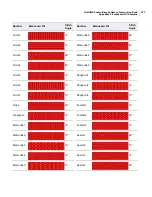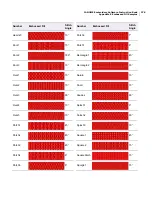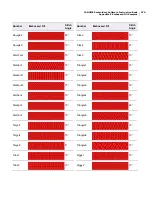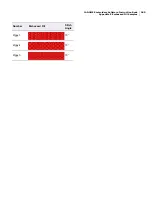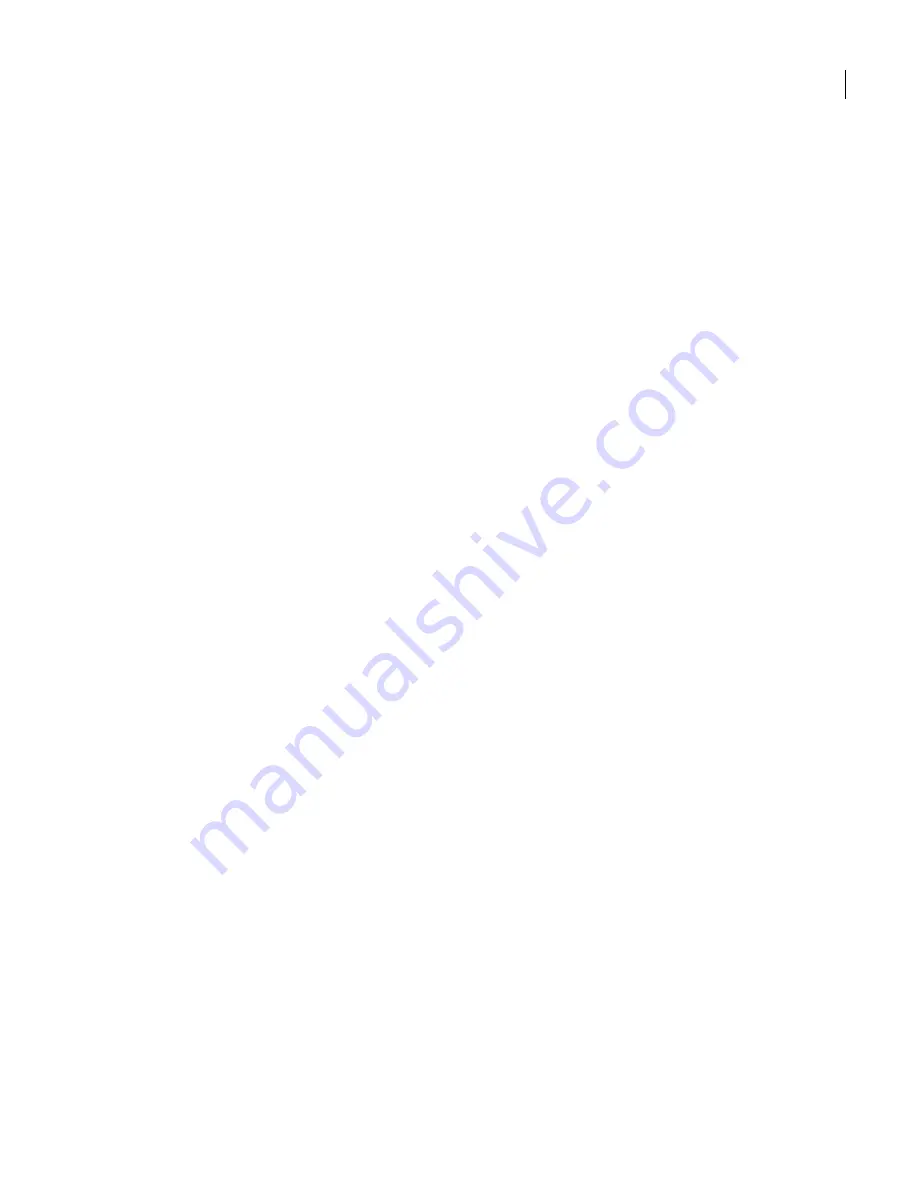
JANOME Embroidery Software Instruction Book
Glossary
291
keyboard. As the mouse moves, its
circuits relay signals that move a
pointer on the screen.
Nap: A fuzzy or downy surface of
fabric covering either one side or
both, produced by brushing loosely
twisted yarns.
Native file format: A design
saved in the original format of the
application you are working with is
said to be the ‘native’ file format. It
can also refer to the stitch file
format required by a specific
embroidery machine. When saved
to another format, it is known as a
non-native format.
Needle: Small, slender piece of
steel with a hole for thread and a
point for piercing fabric. A machine
needle differs from a handwork
needle; the machine needle’s eye
is found at its pointed end. Machine
embroidery needles come with
sharp points for piercing heavy,
tightly woven fabric; ball points
which glide between fibers of knit;
and variety of specialty points,
such as wedge points, which are
used for leather.
Needle points: You can view
needle points in a design to check
density or, for instance, to select
stitches for editing.
Noise filtering: Noise filtering
means restoring the solid color
blocks of original artwork in
scanned images. This is achieved
by merging different shades into
one solid color. Noise filtering is
important for automatic digitizing
because it makes it easier for the
software to identify solid color
blocks which become embroidery
objects in the resulting design. It
also cleans up blurred or mottled
areas of color.
NORMAL template: Default
template. See also
Template
.
Object: In embroidery design
terms, an object is an individual
‘element’ of a design. An object has
many properties, such as its size,
color, sequence in the design,
stitch type and values, including
the rules for stitching. See also
Vector graphic
,
Vector object
.
Object details: All embroidery
objects in EasyDesign contain
defining settings or ‘values’. The
values stored with an object
become its ‘properties’. All objects
have certain properties in common
such as size and position. There are
other, more specific properties of
objects which depend on the object
type.
Object type: An object has a
type, shape, thread type and color,
stitching settings and a position in
the stitching order. The object type
may or may not determine the
intended final appearance of the
stitching.
Orientation: See
Baseline
.
Outline file: Outline or
‘condensed’ files are high-level
formats which contain object
outlines, object properties and
stitch data. When you open an
outline file in EasyDesign,
corresponding stitch types, input
methods and effects are applied.
Outline files can be scaled,
transformed and reshaped without
affecting stitch density or quality.
See also
Stitch file
.
Outline stitch: Stitch such as
Run or Satin used to outline an
embroidery object.
Overview window: Use the
Overview window to view a
thumbnail of the design. The
window is updated whenever you
make a change, and can be used to
zoom in or pan across the Design
Window.
Paint package: Software
application that creates or allows
you to edit image files. You can
create lines and filled areas as well
as edit the image pixel-by-pixel
using paintbrushes, erasers and
spraypaint tools. Examples of
image editing programs are Adobe
Photoshop, Jasc PaintShop Pro and
Corel Photo-Paint. See also
Graphics application
.
Pan: Use Pan to view parts of a
design which are not currently
visible in the Design Window.
Parallel Fill objects:
T
he Parallel
Fill tools create large and complex
shapes generally with fixed rather
than turning stitch angles. Most
shapes can be digitized with these
tools. Collectively these objects are
known as Parallel Fill objects.
Parallel port: A connection on a
computer, usually LPT1, where you
plug in the cable for a parallel
printer and/or a dongle. Parallel
ports are used to connect some
embroidery machines. They are
named LPT1, LPT2, etc. When you
set up a parallel machine
connection, select the parallel port
and the required protocol, and
complete the machine setup
procedure.
Paste: To insert an object, which
has previously been placed on the
clipboard by cutting or copying
selected objects, into a design. You
can paste from the clipboard as
many times as you like.
PCX: PC Paintbrush bitmap image
format.
Pattern outline: See
Motif Run
.
Pencil rub: Low-cost way of
producing an embroidery design
sample. Consists literally of a piece
of tracing paper placed over a
stitchout and rubbed lightly with a
pencil to produce an impression of
the embroidery.
Peripheral: Any device
connected to a computer which is
to some degree controlled by the
computer – e.g. an embroidery
machine or printer.
Photo Click: Technique for
creating embroidery designs
directly from photographs and
other grayscale bitmap images.
Photo Click designs consist of rows
of Satin or Contour stitches of
varying spacing. The effect
resembles the output of a line
printer.
Pixel: A dot. For example, dots of
light that make up the picture on a
computer screen. The more pixels
there are in a given area – that is,
the smaller and closer together
they are – the higher the
resolution.
Pixelation: An effect which
occurs when a bitmap image is
enlarged so that the individual
pixels are obvious to the eye.
PNG: Portable Network Graphics
vector graphic format.
Pointer: A part of the screen
display, the pointer can take
various shapes. It is moved by
moving the mouse and can be used
to point to anything on the screen
to make selections and indicate
points for input. It also indicates
when the computer is working and
no input is possible.
Point: Unit of measurement, with
10 points equal to 1 mm.
Summary of Contents for DigitizerPro
Page 236: ...234 Part IX Software Feature Table ...

